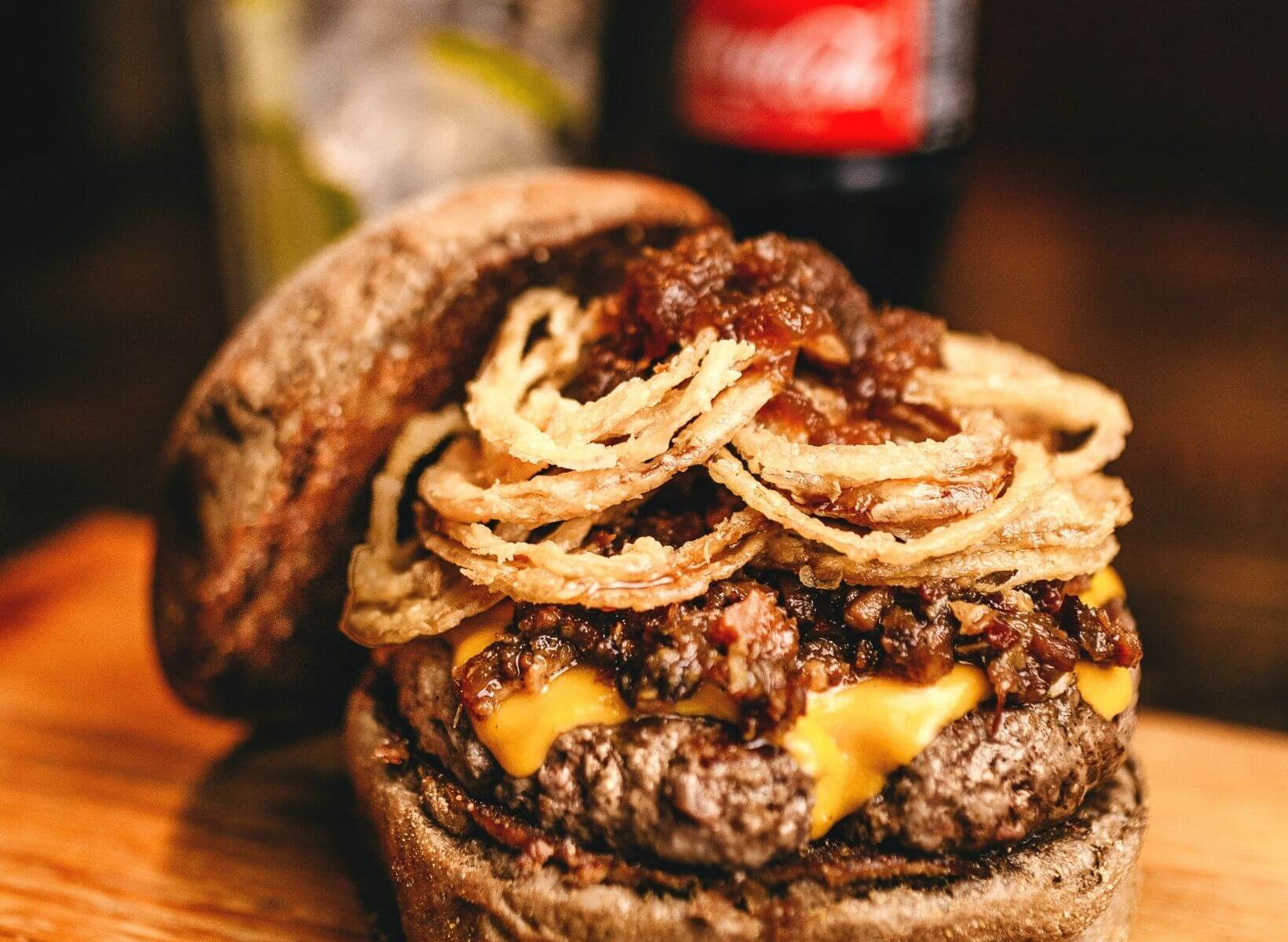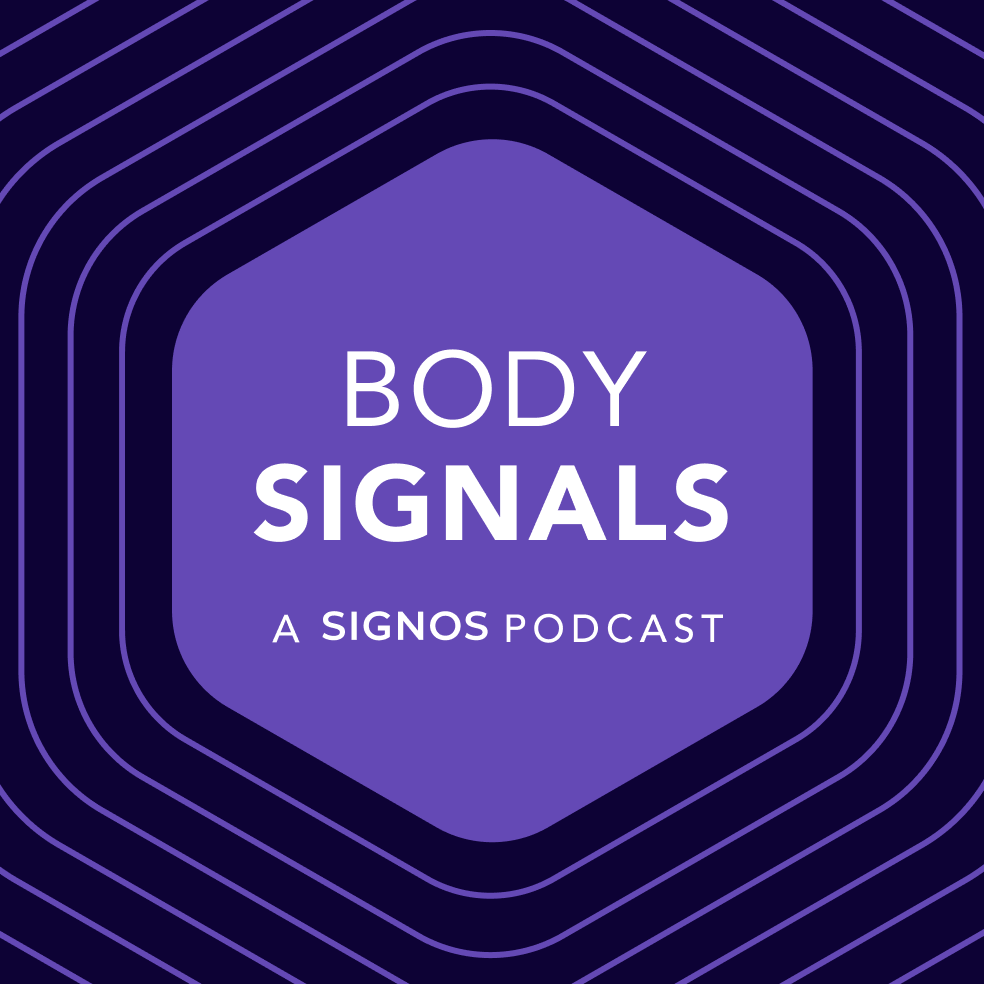It seems like it should be simple to recognize when you’re hungry and when you’re not, but it can be trickier than it appears. Cravings, emotions, food noise, and external cues can make it challenging to recognize when you’re hungry and when you make food choices for other reasons.
In this comprehensive guide, we’ll explore the intricacies behind hunger cues and provide practical tips so you can make mindful decisions about your food choices.
{{mid-cta}}
True Hunger vs. Cravings: Differences Explained
True hunger is a physiological, sometimes uncomfortable response to a lack of food or nutrients. Hunger is controlled by hunger hormones that tell your brain to send cues to eat. Leptin is a hormone secreted by (adipocytes) that lowers appetite and hunger, while ghrelin is a hormone that increases your appetite. Ghrelin levels are at their highest when you have an empty stomach.
Oppositely, cravings usually occur for a very specific food. Cravings are driven by emotions or even pleasure-seeking neurotransmitters in the brain, and foods high in sugar, salt, or fat make it much easier for your brain to crave these foods.
Eating just because the food is available or because you suddenly can't stop thinking about your favorite ice cream can be confused with hunger, but it’s not the same.
Recognizing hunger cues can help you eat in a way that nourishes your body and supports optimal health and weight loss, but it can take work to retrain your brain to understand the different reasons you may feel like eating.
There are several ways to accomplish this, including mindfulness techniques and using metabolic markers like glucose (blood sugar) to understand your individual response to food and nutrients.
Most Common Signs of Hunger

The sensation of hunger is a physiological response to the absence of nutrients or food intake. Hormones that drive hunger, like ghrelin, are produced in the gut and send appetite signals to the brain to increase your appetite.
Signs of hunger include:
- Stomach growling
- Headache
- Low energy
- Light-headedness
- Stomach cramping or pain
- Moody or irritable
Some of these signals occur just as you start to get hungry, while others may be a sign that you've gone too long without eating.
You can tell if you are really hungry because nearly any food will satisfy you. Your body wants nutrients regardless of where they come from.
If you regularly have low energy or feel lightheaded, it may be helpful to work with a dietitian who can examine your eating patterns and assess for anything that could be contributing to the problem.
<div class="pro-tip"><strong>Also Read: </strong><a href=how-to-stop-food-cravings>How to Stop Food Cravings? 9 Effective Methods</a>.</div>
Other Not Hunger-Related Reasons Why You Might Want to Eat
Aside from cravings, there are a number of reasons people eat besides true hunger:
- Boredom: Being stuck at home with nothing to do can increase your trips to the fridge.
- Stress: Feeling stressed can upregulate stress hormones, increasing food cravings and impacting eating habits.
- Sadness: Food becomes a comfort for some people with mental health concerns who may eat when dealing with uncomfortable emotions.
- Habit: The clock says it's noon, so it must be lunchtime, even if you ate a late breakfast.
- Social. If people around you are eating, chances are you will, too, even if you aren't hungry.
4 Ways to Recognize Your True Hunger Signals
Regaining control of hunger and satiety cues takes practice. More than anything, it requires being mindful of what you put into your mouth and how your body feels. Here are a few tips to get started:
1. Use a Hunger Scale to Retrain Your Brain
One way to reconnect with our missing hunger signals is to use a hunger scale. There is no one right way to rate hunger or appetite.
But if you’re just getting started with hunger cues, personalized feedback can be helpful until you’re more confident in your ability to judge hunger. This is where apps like Signos, which connect your glucose data from a continuous glucose monitor (CGM), can help.
We are all familiar with a traffic light where green means go, yellow means slow down, and red means stop. Signos uses the same familiar visual cues to help you tie your glucose levels with hunger. The app provides individualized guidance based on your glucose readings.
If your blood sugar is still elevated from your last meal or snack, the app will let you know that you are still in a red or yellow zone (stop or slow down) and recommend you wait until you are in the green zone (go ahead and eat!).
You can even set a timer for 10 or 20 minutes—whether you’re using the app or trying to do it yourself—to see if you are still hungry after that point. If your desire to eat is based on something other than true hunger, you may end up busy with another activity and no longer feel the need to eat.
With a hunger scale of any kind, you still have complete control. If you want to eat something, even if your glucose is still a bit high or you aren’t truly hungry, you absolutely can. But seeing the color-coded feedback or thinking through where you land on the hunger scale are gentle, positive ways to work on eating in a way that supports wellness.
2. Avoid Processed and Refined Foods
You likely know that highly processed foods full of sugar aren't great for your health, and one reason is that they can interfere with normal hunger cues.
Eating more sugar, salt, and refined oils from processed foods can increase your desire to keep eating. Plus, foods high in refined sugar and carbs can spike your blood sugar, and when it comes back down, you are likely to crave even more simple carbs and sugar to bring blood sugar back up.
3. Eat More Protein and Fiber
Nutrients like protein and fiber are essential for blood sugar balance, impacting your hunger and cravings. Studies on protein conclude that it is the most satiating macronutrient—meaning it keeps you full and satisfied longer than carbs or fat.
Fiber also slows down the glycemic response, keeping your blood sugar steady.
4. Take Your Time While Eating and Remove Distractions
Put down the phone, turn off the television, and stay present with your food. Distracted eating can make it more likely that you miss out on satiety cues, and it also makes it easier to eat quickly without really tasting your food.
How Does Glucose Impact Your Hunger Cues?

Using your biology to connect the dots and understand the difference between true hunger signs and cravings can be powerful.
Blood Sugar Is Closely Tied to Your Hunger
Glucose, the sugar in your blood, rises after eating carbohydrates and drops between meals. This means that if you are reaching for something to eat and your blood sugar is still elevated from your last meal, it could indicate that you are eating for a reason other than hunger.
Drops in blood sugar are closely linked to hunger, as established by a study that used continuous blood glucose monitors along with perceived hunger to assess appetite. Results showed a close tie between low blood sugar between meals and appetite and energy levels. Those with the most significant dips in blood sugar between meals also ate earlier and consumed more food than those with stable blood sugar.
In another study, researchers found that people who eat without signs of hunger were more likely to be overweight and eat when blood sugar is still high. Oppositely, those with lower body sizes were less likely to perceive hunger at higher blood sugar levels, which likely means they could eat according to natural hunger cues instead of cravings or other reasons.
Behavior Modifications Plus Glucose Monitoring are Linked to Improved Hunger Signals
If blood sugar can help predict hunger, it could help people get back in touch with satiety signals. One way to do this is to test your glucose.
In one study, participants learned to estimate blood glucose at meals by linking feelings of hunger with blood sugar readings. By the end of the seven weeks, people in the study could successfully estimate blood sugar and hunger levels to make healthy eating choices.
Similar results were seen in another pilot study on hunger cues in adults. Participants who used glucose monitors could match hunger to blood sugar by the end and reported feeling more aware of hunger and satiety.
Since not all foods raise blood sugar, using glucose as a guide for hunger isn't the only way to assess and retrain your brain, but it can certainly be a part of an overall mindful way to get back in touch with your body.
It's also important to note that these studies were conducted on people without blood sugar dysregulation. Someone with prediabetes or diabetes could have elevated blood sugar because of medical reasons, and it wouldn't necessarily indicate eating without hunger.
Still, for those without diabetes, glucose monitoring could be a powerful tool to get back in touch with hunger cues.
5 Tips to Manage Your Hunger Cues
Managing your hunger cues can lead to healthier eating habits and help you feel better between meals, but it can take time to learn to read your body again. Here are some tips to help you navigate your hunger signals:
- Allow Yourself to Feel Hungry Between Meals: Embracing the sensation of hunger can help you reconnect with your body's natural signals and prevent unnecessary snacking. It might feel uncomfortable initially, but it’s good practice to feel hungry and recognize it as different from cravings.
- Avoid Overeating as a Precaution: Resist the urge to overeat simply because you fear going hungry later. Trust your body's ability to communicate its needs effectively.
- Opt for Smaller Portions: By choosing smaller portions, you can still enjoy your favorite foods mindfully.
- Practice Mindful Eating: Engage all your senses during meals, savoring each bite mindfully. This practice can enhance your eating experience and promote better digestion.
- Establish a Regular Meal Schedule: A consistent meal routine can help regulate hunger cues and prevent impulsive eating.
Finding Your Hunger and Satiety Cues Takes Practice
If you’re just starting the journey to finding your hunger signals, it can take time and practice, just like any other new habit.
If you unintentionally skip meals and find yourself starving before you eat, think about eating more regularly. Taste your food, pair your carbs with protein and fiber, and consider testing your glucose. Using glucose monitoring, a hunger scale, and mindful eating practices can all go a long way to helping you make changes to support a healthy weight.
Some of these signals occur just as you start to get hungry, while others may be a sign you've gone too long without eating.
You can tell if you are really hungry because nearly any food will satisfy you. Your body wants nutrients regardless of where they come from.
<div class="pro-tip"><strong>Learn More: </strong><a href=emotional-eating>Emotional Eating: Stop the Cycle and Regain Control</a>.</div>
- Item 1
- Item 2
- item 3
Topics discussed in this article:
References
- Yeung, A. Y., & Tadi, P. (2023). Physiology, Obesity Neurohormonal Appetite And Satiety Control. In StatPearls. StatPearls Publishing.
- Johnson, F., & Wardle, J. (2014). Variety, palatability, and obesity. Advances in nutrition (Bethesda, Md.), 5(6), 851–859. https://doi.org/10.3945/an.114.007120
- de Castro, J. M., Bellisle, F., Dalix, A. M., & Pearcey, S. M. (2000). Palatability and intake relationships in free-living humans. characterization and independence of influence in North Americans. Physiology & behavior, 70(3-4), 343–350. https://doi.org/10.1016/s0031-9384(00)00264-x
- Davis J. (2018). Hunger, ghrelin and the gut. Brain research, 1693(Pt B), 154–158. https://doi.org/10.1016/j.brainres.2018.01.024
- DiPatrizio, N. V., Joslin, A., Jung, K. M., & Piomelli, D. (2013). Endocannabinoid signaling in the gut mediates preference for dietary unsaturated fats. FASEB journal : official publication of the Federation of American Societies for Experimental Biology, 27(6), 2513–2520. https://doi.org/10.1096/fj.13-227587
- Morell, P., & Fiszman, S. (2017). Revisiting the role of protein-induced satiation and satiety. Food Hydrocolloids, 68, 199-210.
- Fiese, B. H., Jones, B. L., & Jarick, J. M. (2015). Family mealtime dynamics and food consumption: An experimental approach to understanding distractions. Couple and Family Psychology: Research and Practice, 4(4), 199.
- Wyatt, P., Berry, S. E., Finlayson, G., O’Driscoll, R., Hadjigeorgiou, G., Drew, D. A., ... & Valdes, A. M. (2021). Postprandial glycaemic dips predict appetite and energy intake in healthy individuals. Nature metabolism, 3(4), 523-529.
- Schembre, S. M., Liao, Y., Huh, J., & Keller, S. (2020). Using pre-prandial blood glucose to assess eating in the absence of hunger in free-living individuals. Eating behaviors, 38, 101411.
- Ciampolini, M., & Bianchi, R. (2006). Training to estimate blood glucose and to form associations with initial hunger. Nutrition & metabolism, 3, 42. https://doi.org/10.1186/1743-7075-3-42
- de Bruin, W. E., Ward, A. L., Taylor, R. W., & Jospe, M. R. (2019). 'Am I really hungry?' A qualitative exploration of patients' experience, adherence and behaviour change during hunger training: a pilot study. BMJ open, 9(12), e032248. https://doi.org/10.1136/bmjopen-2019-032248
































